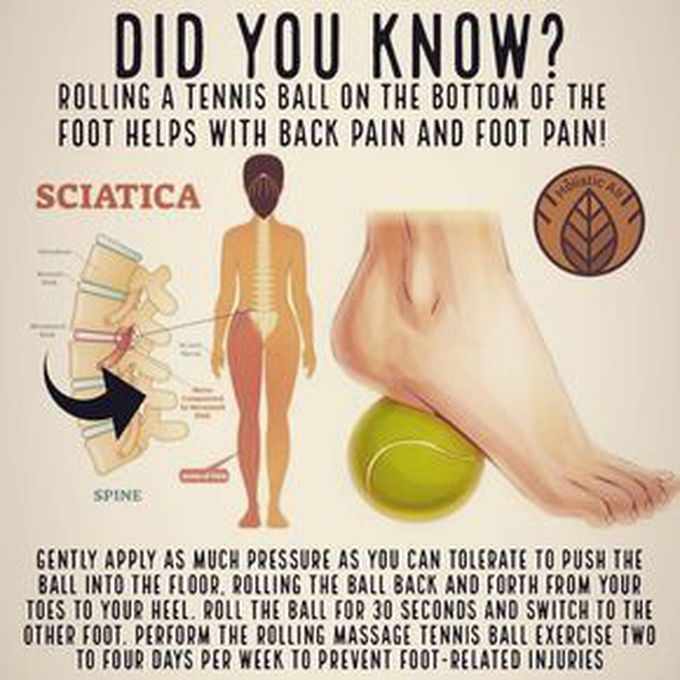


The story of Sciatica and tennis ball
Do you know this_ The tennis ball presses and treats trigger points in the piriformis muscle, reduces the muscle tension and rigidity, improves mobility and improves blood circulation to the area_The tennis ball therapy is good not only for sciatica, but also for back pain. The tennis ball acts as a massage substitute that helps reduce muscle tension and provide relief from lower back pain in the left side or the right side. It is also one of the best ways to relieve pain! Let's brush through the topic - - Sciatica is a medical condition characterized by pain going down the leg from the lower back.This pain may go down the back, outside, or front of the leg.Onset is often sudden following activities like heavy lifting, though gradual onset may also occur.The pain is often described as shooting.Typically, symptoms are only on one side of the body and sometimes may result in pain on both sides. Lower back pain is present at times along with weakness or numbness. Causes-- About 90% of sciatica is due to a "spinal disc herniation" pressing on one of the lumbar (L4, L5) or sacral nerve roots(S1 and less commonly S2, S3). Spondylolisthesis, spinal stenosis, piriformis syndrome, pelvic tumors, and pregnancy are other possible causes of sciatica. The piriformis syndrome - It's a rare condition where the sciatic nerve runs through the piriformis muscle rather than beneath it.When the piriformis shortens or spasms due to trauma or overuse, it is posited that this causes compression of the sciatic nerve. Piriformis syndrome has colloquially been referred to as "WALLET SCIATICA" since a wallet carried in a rear hip pocket compresses the buttock muscles and sciatic nerve when the bearer sits down. Piriformis syndrome may be suspected as a cause of sciatica when the spinal nerve roots contributing to the sciatic nerve are normal and no herniation of a spinal disc is apparent. DIAGNOSIS - - The most applied diagnostic test is the "straight leg raise" to produce Lasègue's sign, which is considered positive if pain in the distribution of the sciatic nerve is felt with passive flexion of the straight leg between 30 and 70 degrees. Imaging modalities such as CT or MRI can help with the diagnosis of lumbar disc herniation. TREATMENT - - When the cause of sciatica is lumbar disc herniation (90% of cases), most cases resolve spontaneously over weeks to months. More than 75% of sciatica cases are managed without surgery.In persons that smoke who also have sciatica, smoking cessation should be strongly considered. PHYSICAL ACTIVITY is often recommended for the conservative management of sciatica for persons that are physically able. Medication-- NSAIDs are commonly recommended as a first-line treatment for sciatica. In those with sciatica due to piriformis syndrome, botulinum toxin injections may improve pain and function. Surgery If sciatica is caused by a herniated disc, discectomy, has tentative evidence of benefit in the short term. If the cause is spondylolisthesis or spinal stenosis, surgery appears to provide pain relief for up to two years.

